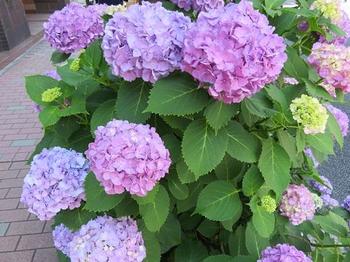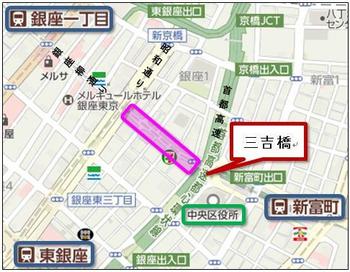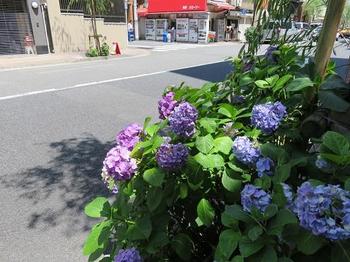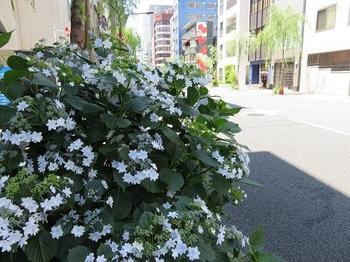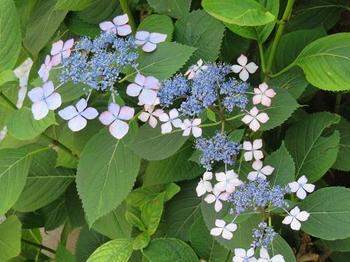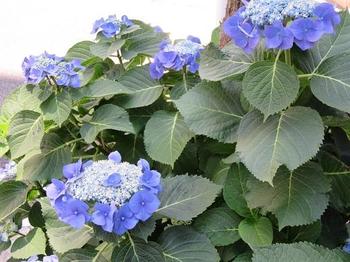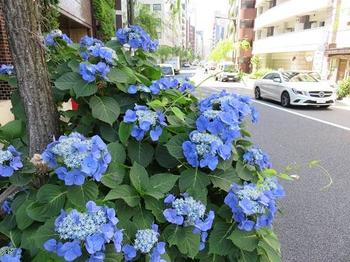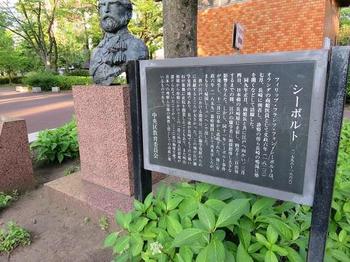The hydrangea on this street is also blooming beautifully this year.![]()
At this time, the Hydrangea Festival is held in various places in Tokyo, and nearby (if not nearby![]() ), the Bunkyo Hydrangea Festival, which is held every year around Shirayama Shrine in Bunkyo-ku (this year, June 11 (Saturday)-19th (Sun)) is famous, but the hydrangea on this street is also gorgeous and I like this tree in Chuo-ku, a pair of willow trees.
), the Bunkyo Hydrangea Festival, which is held every year around Shirayama Shrine in Bunkyo-ku (this year, June 11 (Saturday)-19th (Sun)) is famous, but the hydrangea on this street is also gorgeous and I like this tree in Chuo-ku, a pair of willow trees.![]()
There are many kinds of bigleaf hydrangea and Hon Hydrangea, which are beautiful.![]()
Hydrangea seems to change its color depending on the acidity of the planted soil (alkaline, redish, acidic and blueish), and you can also enjoy subtle blue (indigo) changes.![]()
In the first place, the name of hydrangea is said to have changed "Azusaai (Shushin Ai)," which means that indigo flowers gather.![]()
If you forcibly scratch the relationship between Chuo-ku and Hydrangea, you will find yourself.
In the late Edo period, Siebold, who worked to spread Western medicine in Nagasaki, was also a naturalist and gave Hydlandia Otaxa to Hydrangea. It is said that it is derived from the name of "Otaki-san" (Dr. Tomitaro Makino).![]()
His bust was built in Akatsuki Park, partly because Siebold had with Mr. Taki opened a maternity hospital in Tsukiji.
What is planted around the Siebold statue was bigleaf hydrangea, which began to bloom.![]()
By the way, Hydlandia consists of Greek hydro (water) and angelic (container), and seems to be interpreted as "water vessel" and "water turtle".![]()
During the rainy season, the blue, indigo and pink hydrangeas that continue to bloom during that period are refreshing.![]()
![]()
![]()
![]()
![]()
![]()
![]()
![]()
![]()
